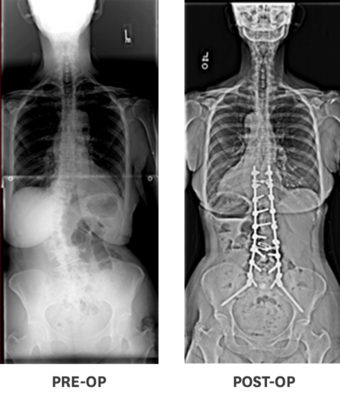Adults with scoliosis and other spinal deformities can benefit from the multidisciplinary approach offered at the USC Spine Center. Adults of any age can be treated for their scoliosis or back deformity. Patients receive coordinated care from spine surgeons, podiatrists, physiatrists, vascular surgeons, occupational therapists and physiotherapists within the USC Spine Center. We also offer supportive programs for patients when applicable, including lifestyle modification and psychotherapy. Our physicians work with endocrinologists and rheumatologists to optimize the patients’ bone quality using pharmacotherapy.
The multidisciplinary team at the USC Spine Center considers the patient’s quality of life, the severity of the deformity and the patient’s treatment history before deciding on a management strategy.
Non-operative treatments offered at the USC Spine Center include physical therapy, medical management, epidural injections and facet joint injections.
Surgery is reserved for patients who are still affected by the deformity despite having received maximal non-operative treatment. Our surgeons have extensive experience treating patients with scoliosis, kyphosis, spondylolisthesis, flat-back deformity, ankylosing spondylitis and post-traumatic deformity, among other conditions.
The USC Spine Center specializes in offering patients with adult scoliosis and deformity the option of minimally invasive surgical procedures, including lateral interbody approaches combined with percutaneous pedicle screw augmentation.1 These minimally invasive procedures have a lower risk of complications, and patients generally recover faster from surgery. Our team is experienced in managing complex cases, including patients who need revision surgeries for their deformity.

Other advanced surgical options offered for patients with spinal deformity include intraoperative stereotaxic navigation to increase the surgical efficiency and patient safety associated with placing hardware. During scoliosis surgery, blood loss is managed with a strategic protocol, including self-directed donation and intraoperative and anesthetic blood-saving strategies.
In addition to the traditional posterior surgical approach, our surgeons will use anterior, oblique and lateral surgical approaches to maximize the extent of deformity correction and enhance fusion potential. Each patient will be evaluated carefully to arrive at a customized operative plan to ensure the best clinical outcome.